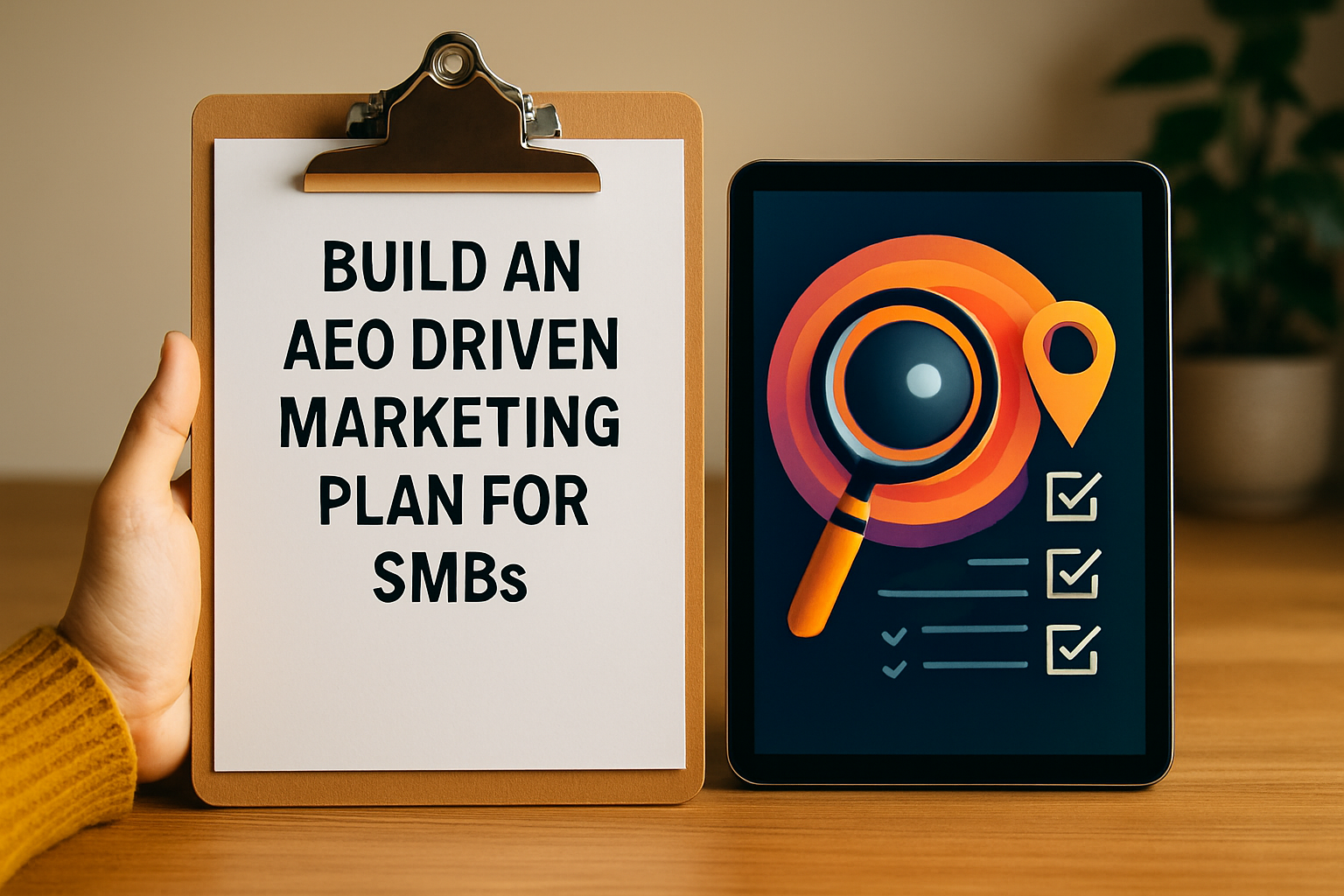Lead Nurturing Explained: Maximizing Long-Term Conversions

Only about 25 percent of leads are ready to buy when they first contact a business, while the rest require thoughtful engagement over time. Many companies miss out on valuable customers because they believe lead nurturing is a quick, one-size-fits-all solution. Understanding how real lead nurturing works can help you earn trust, build stronger relationships, and turn those initial conversations into lasting partnerships.
Table of Contents
- Defining Lead Nurturing And Common Myths
- Key Stages And Techniques Of Lead Nurturing
- Types Of Lead Nurturing Sequences For Service Businesses
- Role Of Automation And Personalization
- Measuring Success And Avoiding Common Pitfalls
Key Takeaways
| Point | Details |
|---|---|
| Effective Lead Nurturing | Aimed at understanding customer needs, lead nurturing builds relationships through targeted content and consistent communication across multiple touchpoints. |
| Common Misconceptions | Many believe lead nurturing is a one-time email effort, but it requires ongoing, patient relationship-building suitable for businesses of all sizes. |
| Automation and Personalization | Utilizing automation and data-driven insights allows businesses to create personalized communication pathways that enhance engagement and conversion. |
| Measuring Success | Tracking key metrics like conversion rates and customer lifetime value is essential for continuous improvement in lead nurturing strategies. |
Defining Lead Nurturing and Common Myths
Lead nurturing transforms cold contacts into warm prospects by systematically building relationships across multiple touchpoints. According to research from career development experts, it’s a strategic process focused on understanding customer needs and creating meaningful engagement before a sale occurs.
The core of lead nurturing goes beyond simple marketing tactics. As insights from the Professional Promotional Products Association International (PPAI) indicate, it involves developing connections with potential customers at every stage of their buying journey - whether they’re just discovering your company or preparing to make a purchase. This means creating targeted content, establishing thought leadership, and generating trust through consistent communication.
Unlike traditional sales approaches, effective lead nurturing requires a customer-centric mindset. Key characteristics include:

- Understanding prospect pain points
- Delivering personalized content
- Maintaining consistent communication
- Using technology to track and optimize interactions
Common myths about lead nurturing often derail business strategies. Many entrepreneurs mistakenly believe nurturing is a one-time email sequence or that it’s only relevant for large corporations. In reality, it’s a nuanced approach that works for businesses of all sizes, requiring patience, strategic thinking, and genuine relationship-building.
Key Stages and Techniques of Lead Nurturing
Lead nurturing is a strategic journey that transforms potential customers from initial awareness to committed advocates. According to research from UMA Technology, this process requires a sophisticated approach involving precise segmentation, personalized engagement, and data-driven optimization across multiple interaction stages.
According to insights from the Professional Promotional Products Association International (PPAI), a winning lead nurturing strategy involves creating momentum through targeted techniques. Key stages include:
- Awareness Stage: Introducing your brand and value proposition
- Consideration Stage: Providing educational content and demonstrating expertise
- Decision Stage: Offering specific solutions and building trust
- Retention Stage: Continuing engagement and fostering loyalty
Successful lead nurturing demands a systematic approach. This means setting up lead scoring mechanisms, maintaining an updated database, and developing education-focused messaging that speaks directly to prospect needs. The ultimate goal is not just conversion, but creating a sustainable relationship where prospects feel genuinely understood and supported throughout their customer journey.
Technologically, modern lead nurturing relies on automation and intelligent tracking. By implementing multi-stage campaigns with precise engagement triggers, businesses can create personalized experiences that adapt to each prospect’s unique behavior and preferences. This approach transforms traditional sales funnels into dynamic, responsive interaction pathways that significantly improve conversion rates and customer satisfaction.
Types of Lead Nurturing Sequences for Service Businesses
Lead nurturing sequences are strategic communication pathways designed to guide potential clients through their decision-making journey. According to research from UMA Technology, service businesses can implement multi-stage frameworks that transform initial interest into committed customer relationships.
Research highlights several critical lead nurturing sequence types for service-based businesses:
- Awareness Sequence: Introduces your brand and core value proposition
- Educational Sequence: Provides in-depth insights and demonstrates expertise
- Conversion Sequence: Targets prospects ready to make purchasing decisions
- Retention Sequence: Maintains engagement with existing customers
Each sequence serves a unique purpose in the customer journey. According to UMA Technology’s research, successful sequences involve targeted content marketing, interactive tutorials, personalized outreach, and behavior-based email campaigns. These approaches help service businesses create tailored experiences that address specific prospect needs and pain points.
Here’s how the main lead nurturing sequence types for service businesses compare:
| Sequence Type | Purpose | Typical Content | Key Goal |
|---|---|---|---|
| Awareness | Introduce brand Build interest |
Brand story Core value proposition |
Generate initial engagement |
| Educational | Provide insights Show expertise |
Whitepapers Tutorials FAQs |
Move leads to consideration |
| Conversion | Drive decisions Show solutions |
Case studies Special offers |
Encourage purchase |
| Retention | Maintain engagement Build loyalty |
Newsletters Exclusive updates |
Foster long-term relationships |
The most effective lead nurturing strategies combine multiple sequence types with intelligent tracking and automation. By designing flexible, adaptive communication pathways, service businesses can create seamless interactions that feel personal and valuable. This approach transforms traditional marketing into a dynamic, responsive system that builds trust, demonstrates expertise, and guides prospects naturally toward becoming loyal, long-term clients.
Role of Automation and Personalization
Lead nurturing automation transforms how businesses engage with potential clients, creating intelligent systems that adapt in real-time to individual prospect behaviors. According to research from UMA Technology, modern automation workflows enable businesses to streamline engagement and boost conversion rates through sophisticated, personalized interactions.
Key components of effective automation include:
- Segmentation: Categorizing leads based on specific characteristics
- Trigger-based workflows: Activating personalized communication sequences
- Multi-channel delivery: Engaging prospects across different platforms
- Continuous feedback loops: Refining strategies based on real-time performance data
Nowadays, personalization goes beyond simply inserting a prospect’s name into an email. Research indicates that businesses can implement no-code automation platforms that integrate seamlessly with existing CRM and marketing tools. These platforms offer visual workflow builders that allow marketing teams to create complex, behavior-driven communication strategies without extensive technical expertise.
The most powerful lead nurturing approaches combine intelligent automation with deep personalization. By leveraging data-driven insights and adaptive technologies, businesses can create communication pathways that feel individually crafted, responsive, and genuinely valuable to each prospect. This approach transforms traditional marketing from a one-size-fits-all model to a dynamic, intelligent system that builds meaningful connections and drives sustainable growth.
Measuring Success and Avoiding Common Pitfalls
Lead nurturing analytics provide critical insights into the effectiveness of your marketing strategies. According to research from the American Marketing Association, successful measurement requires establishing clear goals, developing comprehensive buyer profiles, and implementing sophisticated lead scoring programs.
Key performance metrics to track include:
- Conversion Rates: Percentage of leads moving through the sales funnel
- Customer Acquisition Cost: Total investment required to acquire a new customer
- Customer Lifetime Value: Total revenue generated from each customer relationship
- Churn Rate: Percentage of prospects or customers who discontinue engagement
Common pitfalls can significantly undermine lead nurturing efforts. Many businesses struggle with over-communication or generic messaging that fails to resonate with specific audience segments. According to UMA Technology’s benchmarking research, successful organizations prioritize personalization and maintain a delicate balance between staying connected and avoiding prospect fatigue.
The most effective lead nurturing strategies embrace continuous improvement. By regularly benchmarking performance against industry standards, businesses can identify gaps, refine their approach, and create more targeted, responsive communication pathways. This adaptive approach transforms lead nurturing from a static process into a dynamic, intelligence-driven system that consistently delivers value to both the business and its potential customers.
Unlock Consistent Growth with Smart Lead Nurturing Solutions
The article highlights key challenges businesses face in transforming cold leads into loyal customers. Building trust through personalized communication and maintaining engagement across multiple stages require more than just effort—they demand automation, precision, and empathy. Common pain points like over-communication, generic messaging, and manual tracking often cause frustration and lost opportunities. To truly maximize long-term conversions, businesses need tools that deliver targeted content, intelligent sequencing, and real-time responsiveness.
Authority Echo is designed specifically to address these issues for service-oriented businesses. With automated lead nurturing sequences, AI-driven personalization, and seamless integration of scheduling and payment processing, Authority Echo helps you build authentic relationships at every step of the buyer journey. You can reduce administrative overload, avoid communication fatigue, and create meaningful engagement that turns prospects into repeat clients.
Take control of your lead nurturing strategy today and experience measurable improvements in engagement and conversion. Explore how our platform can elevate your marketing approach at Authority Echo. For a practical start, discover our Lead Generation and Nurturing Features and streamline your sales funnel with ease.
Ready to turn prospects into loyal customers faster and smarter

Get started now with Authority Echo and transform your lead nurturing into a growth engine. Visit https://authorityecho.com to learn more and schedule a personalized demo.
Frequently Asked Questions
What is lead nurturing?
Lead nurturing is a strategic process that involves building relationships with potential customers through personalized communication across various touchpoints, guiding them from initial awareness to eventual conversion.
Why is lead nurturing important for businesses?
Lead nurturing is crucial because it helps transform cold leads into warm prospects, builds trust, provides valuable insights, and significantly improves conversion rates and customer satisfaction through tailored engagement.
What are the key stages of lead nurturing?
The key stages of lead nurturing include the Awareness Stage (introducing your brand), Consideration Stage (providing educational content), Decision Stage (offering specific solutions), and Retention Stage (maintaining engagement with existing customers).
How can automation enhance lead nurturing efforts?
Automation enhances lead nurturing by streamlining communication, enabling personalized interactions at scale, using trigger-based workflows, segmenting audiences, and delivering messages across multiple channels based on individual behaviors.




